Have you ever considered creating a cut flower garden in your Colorado backyard? It’s wonderful to have fresh cut flowers for vases inside your home all summer long. And these flowers are a beautiful addition to your landscape providing habitats for pollinators and butterflies. As a gardener in Zone 5, I understand the importance of choosing resilient plants that thrive in our dry climate. Here, I’ll share with you some of the best flowers to plant in Colorado and how to get started.
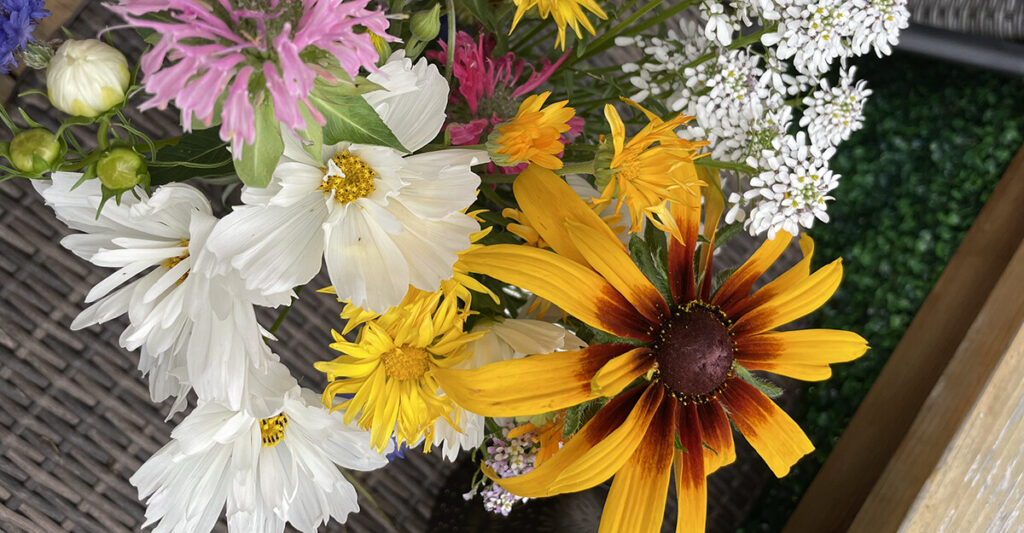
Planning Your Cut Flower Garden
The first step in creating a beautiful drought tolerant flower garden is to plan it out. Consider the location of your garden and the amount of sunlight it gets throughout the day. Most cut flowers require at least 6 hours of sun per day, so choose a spot that receives adequate sunlight. Prepare the soil by adding organic matter such as compost or aged manure to improve the soil quality and drainage. Once your soil is ready, decide on the layout of your garden. Place taller flowers at the back and shorter blooms in front, creating a layered effect that adds depth and texture to your garden.
When I first started gardening, my primary focus had always been my vegetable garden. I had always grown flowers but it was small additions each year of perennials and annuals mixed together. When I first decided to create an intentional cut flower garden, I decided to keep it compact in about a 4 x 4 ft space and do grouping together of the same flowers. So visually, I paid special attention to the height expectations so the taller flowers were flanking the back of the garden bed.
Water Requirements
One of the biggest challenges when it comes to gardening in Denver’s climate is watering. Water is scarce, so the key is to water your plants deeply and infrequently. Invest in drip system. This was a game changer for my garden. It ensures that the water reaches the roots of your plants without evaporating too quickly and with timed watering, you can do it consistently at the same time each day. Water early in the morning or late in the evening to prevent water loss from evaporation during the heat of the day. Also, consider adding mulch to your garden, which helps to retain moisture and regulate soil temperature.
The Best Drought Tolerant Flowers
Now, onto the fun part — choosing the best cut flowers for your Colorado garden! Since my vegetable garden requires consistent water, we love to choose options that reserve water in our backyard. We’ve replaced sections of our lawn with native plants that require minimal water. Additionally, I like to include drought tolerant plants for our perennials and other cut flowers. It helps balance out our water usage so that a drip system isn’t needed throughout our entire backyard.
In fact, I’ve had great success with my drought tolerant gardens. Most are on no drip system at all. And the ones that do have a drip system were mainly used when the plants were first getting established. Once these plants were established, we could reduce the watering schedule down to once a week.
Here are some of our favorite flowers to try for your Colorado cut flower garden. Most of these selections thrive in arid climates with very little watering once they germinate (if planting from seed) and are established after a month or so.
Calendula
This vibrant and cheery flower comes in shades of yellow and orange and blooms from spring to fall. A hardy annual, calendula is easy to grow from seed and can be sown directly into the soil in early spring or started indoors 6 to 8 weeks before the last frost. Once established, it requires minimal watering and deadheading to promote continuous blooming.
Salvia
It’s recommended to start Salvia in your garden with young plants from a nursery for quicker and more reliable results. It’s a drought-tolerant plant that requires minimal watering once established. My salvia often thrive with rain water alone (which can be very infrequent in Denver’s climate). Deadhead faded flowers to encourage continuous blooming throughout the summer.
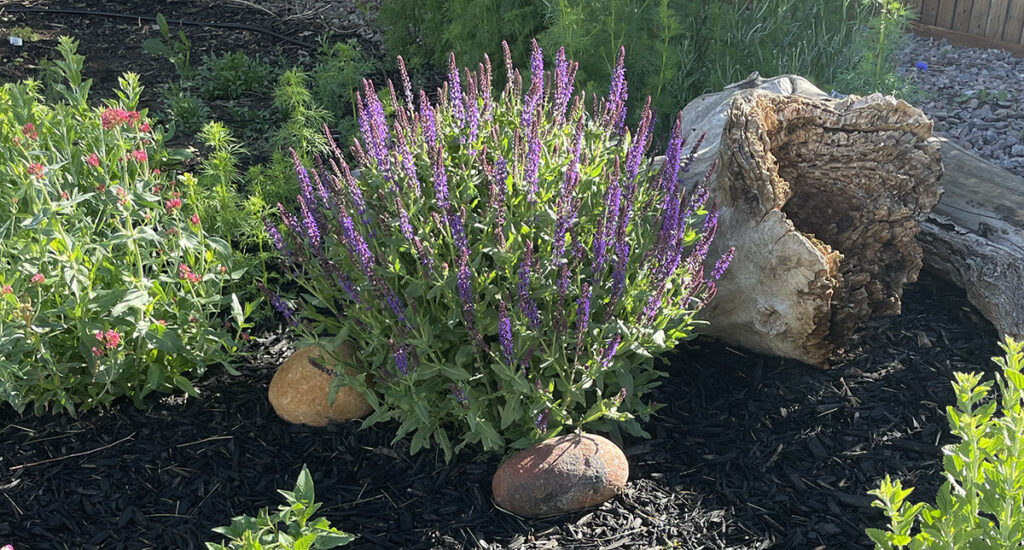
Bachelor Button
Also known as cornflowers, these charming flowers come in shades of blue, pink, and purple. They bloom from late spring to early summer. This hardy annual can be sown directly into the soil after the last frost and require little watering once established. Deadhead regularly to encourage more blooming.
Cosmos
These delicate, daisy-like flowers come in shades of pink, white, and red and bloom from mid-summer until the first frost. Sow the seeds directly into the soil in early spring and water well to promote germination. Consider staking the taller varieties to prevent them from falling over.
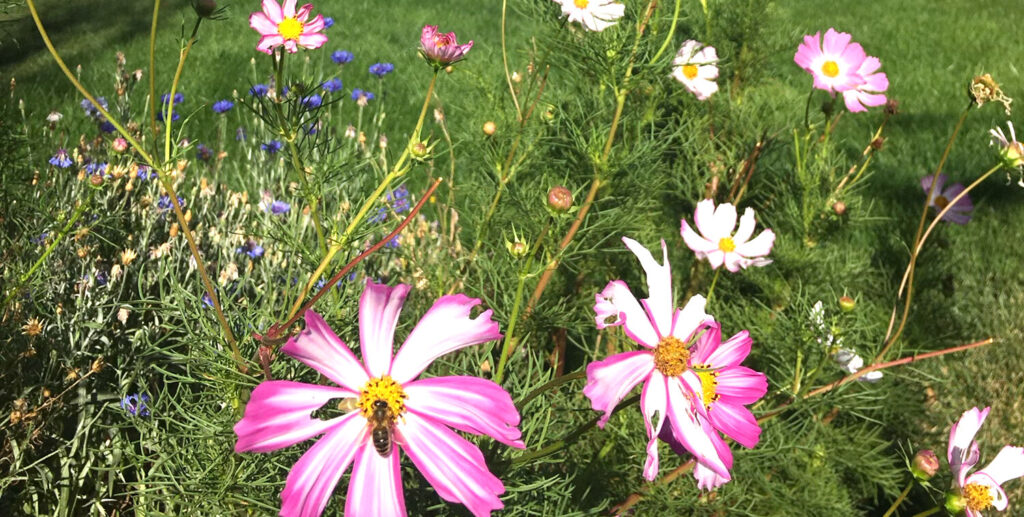
Sweet Allysum
This low-growing, white-flowered plant is perfect for bordering your garden and filling in spaces between taller blooms. It requires minimal watering and can be planted from seed directly in the soil after the last frost.
Zinnia
These dazzling flowers come in a variety of colors and bloom from mid-summer until the first frost. They’re a hardy annual that can be sown directly into the soil after the last frost. I’ve had great success with my zinnias and only hand water a couple times a week once established. Deadhead regularly to encourage more blooming.
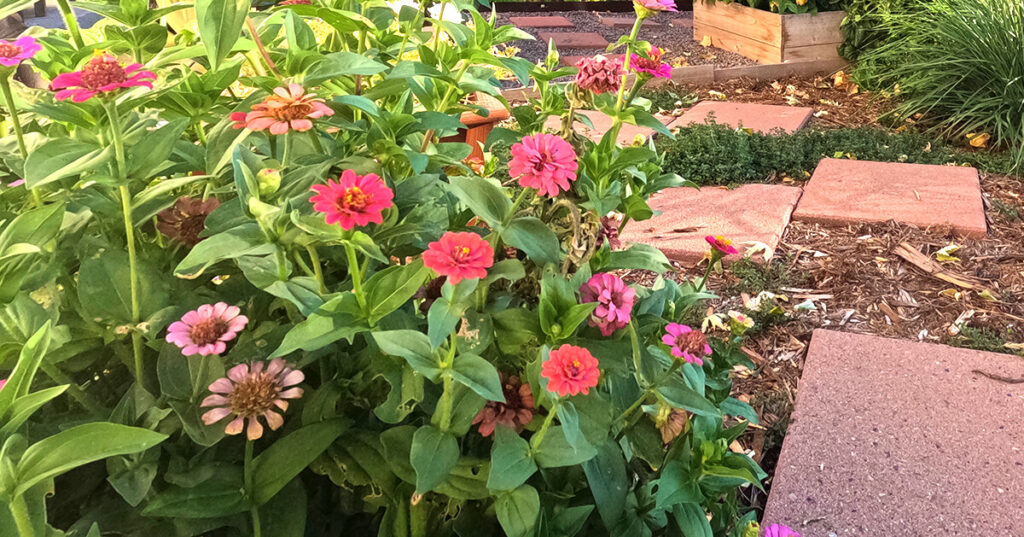
Penstamon
This drought-tolerant perennial plant comes in a variety of shades, including pink, red, lavender, and purple. It blooms from late spring to early summer and requires well-draining soil. Plant penstamon after the last frost, at a depth of 4-6 inches.
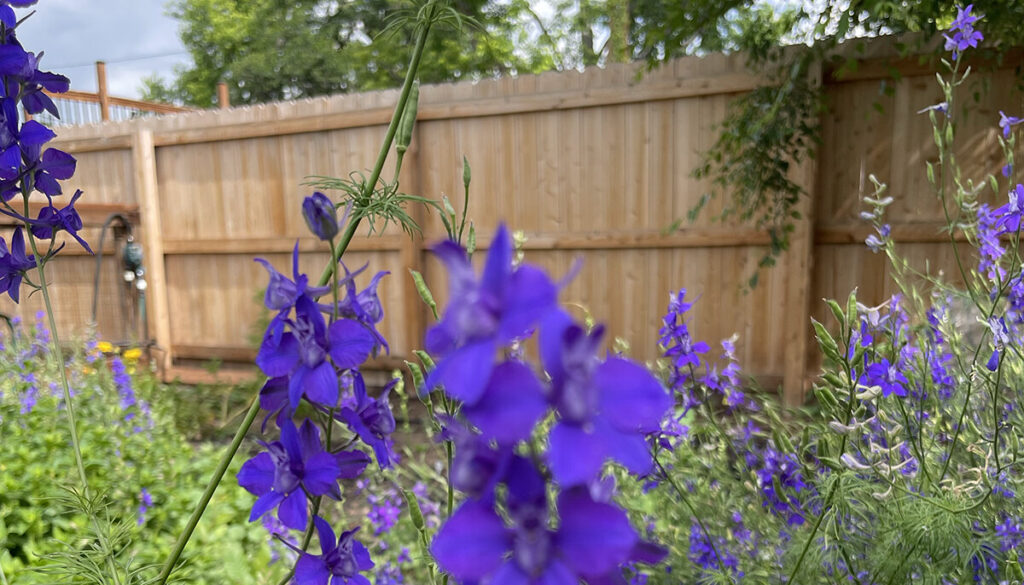
With a little planning, creating a thriving cut flower garden in the heart of Denver’s arid climate is not only possible, but it’s also a rewarding experience. By choosing the right flowers and following the watering and planting tips above, you can ensure a colorful and vibrant garden that will delight you throughout the growing season. Remember to have fun, experiment, and share your experiences with fellow gardeners.





